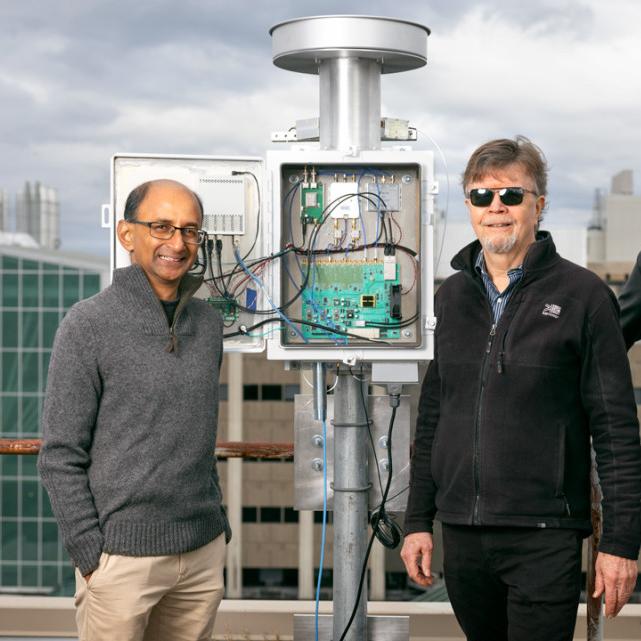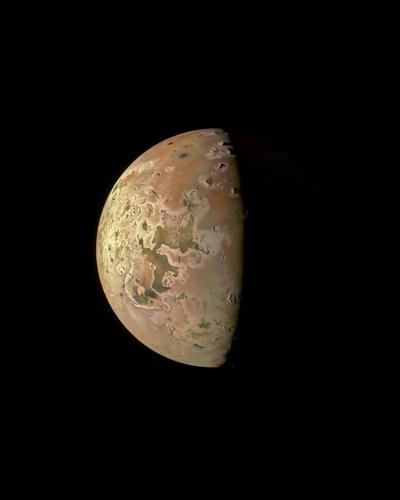By staring into the hellish landscape of Jupiter’s moon Io – the most volcanically active location in the solar system – Cornell astronomers have been able to study a fundamental process in planetary formation and evolution: tidal heating.
“Tidal heating plays an important role in the heating and orbital evolution of celestial bodies,” said Alex Hayes ’03, M.Eng. ’04, the Jennifer and Albert Sohn Professor of Astronomy in the College of Arts and Sciences. “It provides the warmth necessary to form and sustain subsurface oceans in the moons around giant planets like Jupiter and Saturn.”
“Studying the inhospitable landscape of Io’s volcanoes actually inspires science to look for life,” said lead author Madeline Pettine, a doctoral student in astronomy (Graduate School).
By examining flyby data from the NASA spacecraft Juno, the astronomers found that Io has active volcanoes at its poles that may help to regulate tidal heating – which causes friction – in its magma interior.
“I’m trying to match the pattern of volcanoes on Io and the heat flow that they’re producing with the heat flow we expected from theoretical models,” said Pettine, on the new research, “JIRAM Observations of Volcanic Flux on Io: Distribution and Comparison to Tidal Heat Flow Models,” published Sept. 7 in Geophysical Research Letters.
Read the full Cornell Chronicle article here





